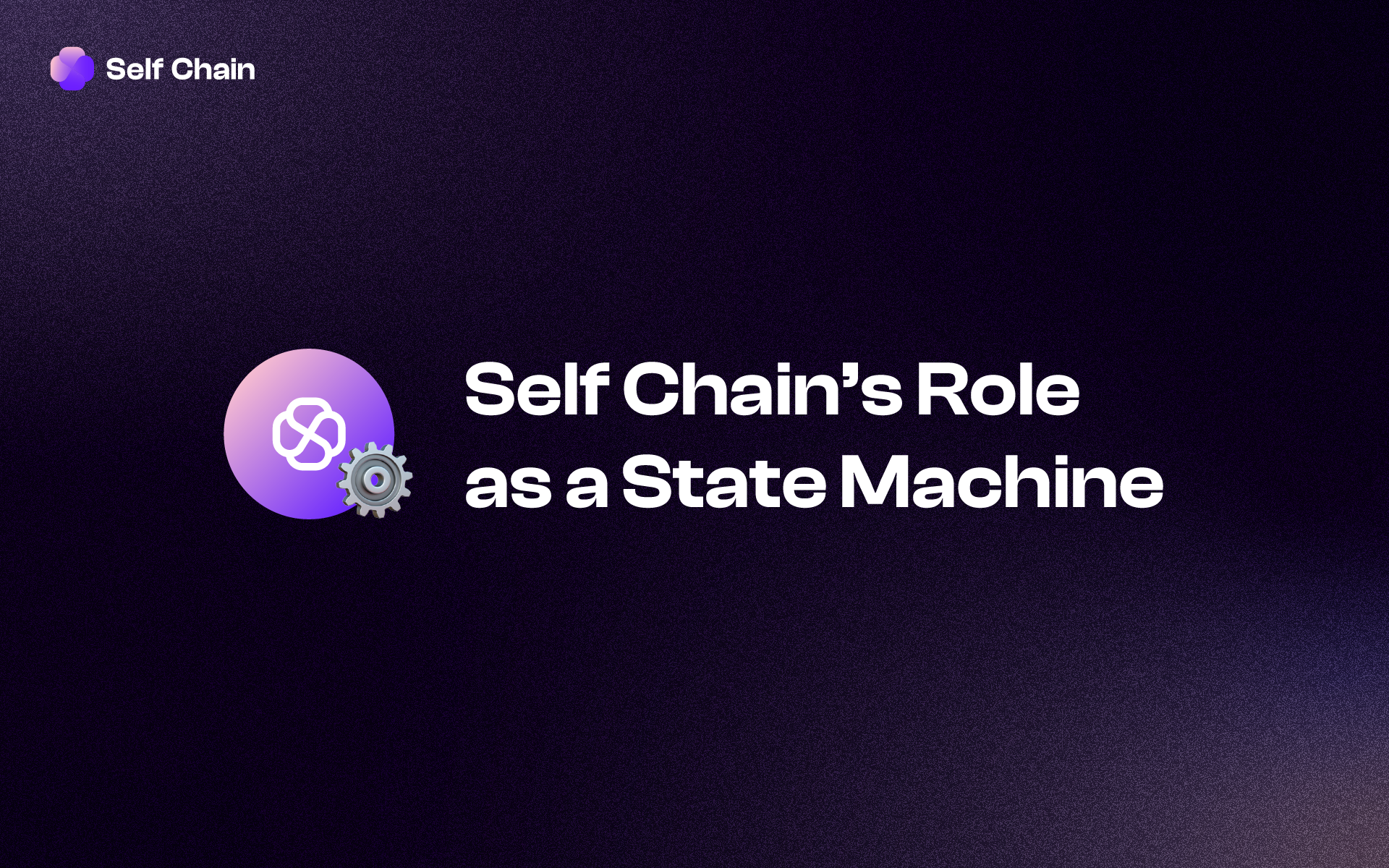Self Chain's Role as a State Machine and Guardian of Encrypted Backups
Self Chain redefines digital asset security with its innovative state machine architecture.

In the dynamic landscape of blockchain technology, Self Chain emerges as a pioneering Layer 1 protocol, redefining how we store and manage our digital assets. Self Chain transcends the traditional boundaries of a blockchain, positioning itself as a robust foundation for secure wallet share storage and management. Its architecture is ingeniously designed to address a significant challenge in the blockchain realm: securely storing cryptographic keys and sensitive data while maintaining accessibility for users. This is where the concept of a state machine comes into play, revolutionizing the very fabric of digital asset security.
The Self Chain State Machine: Orchestrating Security with Precision:
In the realm of blockchain, a state machine orchestrates transitions between different stages of a process. Self Chain leverages this concept to create a dynamic security ecosystem. At its core, Self Chain serves as a guardian of encrypted client-side backups, safeguarding them against loss, theft, or inadvertent deletion. But it doesn't stop there. The master decryption key, a linchpin of recovery, also finds its secure abode within Self Chain's state machine.
Master Decryption Key: Unveiling Recovery Potential:
The master decryption key serves as the ultimate safety net for wallet recovery. By entrusting this crucial key to Self Chain, users can rest assured that even in the face of unforeseen challenges, their access to the wallet remains intact. The innovative fusion of blockchain security and recovery convenience establishes Self Chain's reputation as a trailblazer in the realm of wallet architecture.
The Self Chain State Machine in Action:
At its core, a state machine is a computational model that undergoes transitions between various states based on predefined inputs or events. In the context of the Self Chain, the state machine acts as a control center that orchestrates the intricate dance of data, interactions, and processes involved in Multi-Party Computation (MPC). This technology is at the heart of the Self Chain, responsible for key generation, transaction signing, and security enhancements.
Empowering Multi-Party Computation (MPC):
The integration of Self Chain's state machine into the Multi-Party Computation (MPC) protocol marks a significant leap forward. Within the MPC framework, Self Chain's state machine serves as the keystone in managing intricate transitions and interactions. It ensures the seamless execution of the protocol's complex processes, fostering data synchronization and integrity.
A Paradigm Shift in Wallet Architecture:
Self Chain's role as a state machine within the realm of encrypted backup and recovery ushers in a new era of wallet architecture. It's a testament to the potential of blockchain to redefine security paradigms and user experiences. As the realms of cryptography, blockchain, and design converge, Self Chain shapes a future where individuals navigate the digital frontier with confidence, knowing their assets are fortified and their control unwavering.
Exploring the Inner Workings of Self Chain's State Machine:
At its essence, the Self Chain state machine is a master conductor orchestrating a symphony of security and functionality. When a user initiates an action, such as a transaction, the state machine springs to life. It processes the request, guiding it through a sequence of states, each representing a crucial step in the process.
From key generation to transaction signing, the state machine ensures that all parties involved in the Multi-Party Computation (MPC) protocol collaborate seamlessly. It oversees the synchronization of private shares, manages communication between entities, and maintains a record of the process's progress. The result is a secure, collaborative environment where transactions are executed with the combined effort of multiple parties, reinforcing trust and integrity.
Furthermore, the state machine's role in securing encrypted backups is pivotal. It coordinates the generation of encrypted client-side backups, working in harmony with both the Frontier Mobile app and the Frontier MPC API. These backups, encrypted with a unique symmetric key, find their safe haven within the Self Chain ecosystem. Should the need arise, the state machine facilitates the recovery process, ensuring users can access their funds even in challenging scenarios.
In a future-oriented twist, Self Chain envisions the Self Chain blockchain itself serving as the state machine. This integration would unify the management of encrypted backups, Multi-Party Computation (MPC), and the orchestration of processes within a single, cohesive framework.
In conclusion, the Self Chain state machine is the embodiment of innovation and security, harmonizing the intricate elements of wallet share storage, Multi-Party Computation (MPC), and user experience. Its orchestration is the backbone of Self Chain's visionary approach, empowering individuals to navigate the world of digital assets with confidence and control. Through the seamless coordination of processes and data, the state machine paves the way for a new era in blockchain technology—one where security and convenience coalesce to redefine the boundaries of what's possible.
About Self Chain
Welcome to Self Chain, a Layer 1 blockchain designed for trustless, next-generation key management. Self Chain offers a secure infrastructure for keyless wallets and ensures enhanced security and user control through advanced technologies like Multi-Party Computation (MPC) and Threshold Signature Scheme (TSS).
Join us as we shape the future of finance, privacy, and digital ownership. Unlock the true potential of blockchain technology with Self Chain and be part of the decentralized movement.
